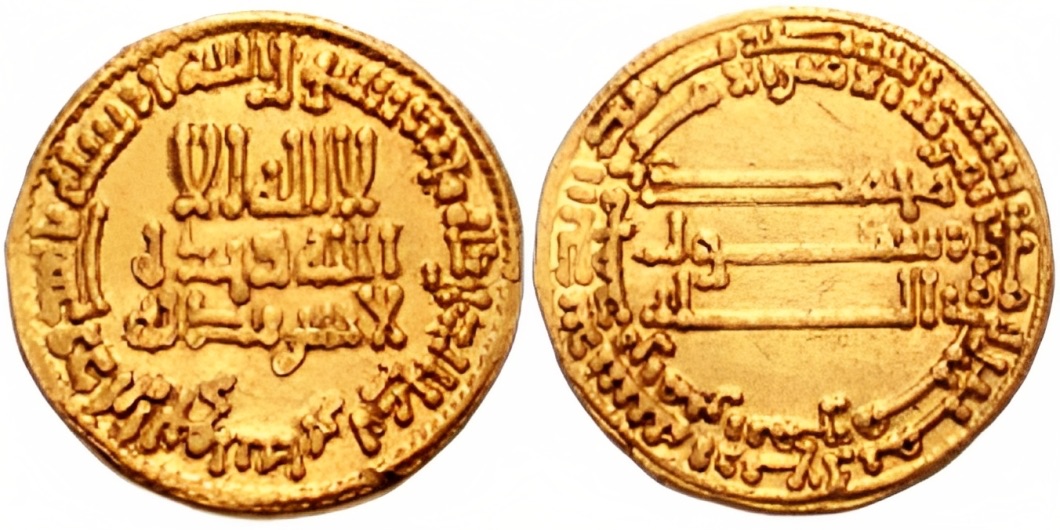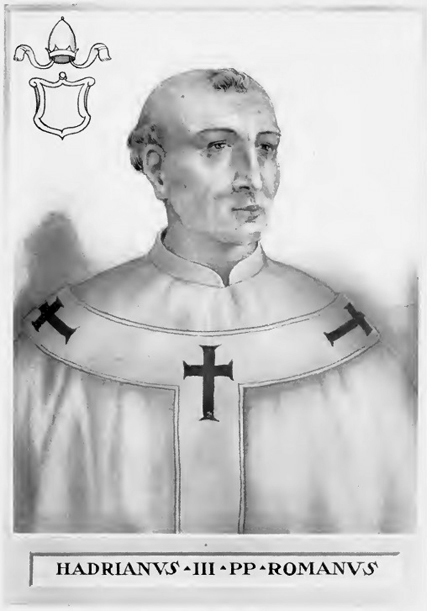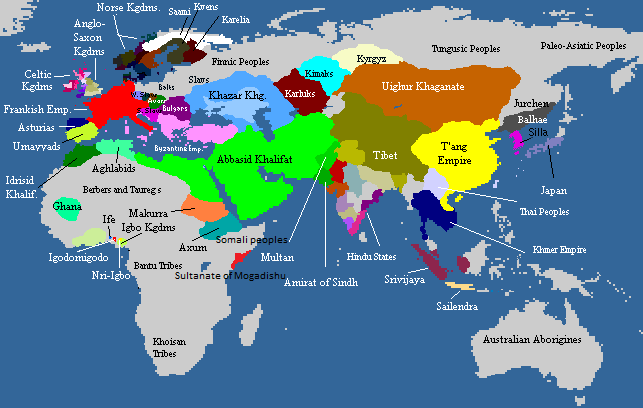|
Buran Bint Al-Hasan Ibn Sahl
Buran bint al-Hasan ibn Sahl ( ar, بوران بنت الحسن بن سهل; 6 December 807 – 21 September 884) also known as Khadija bint al-Hasan ibn Sahl (), was one of the wives of the Abbasid caliph Al-Ma'mun. Buran was al-Ma'mun's second wife, She was the daughter of al-Ma'mun's officer, al-Hasan ibn Sahl. She was born as Khadija. She was born on 6 December 807. She was the daughter of al-Hasan ibn Sahl, a senior official of al-Ma'mun, and likely named after the Sasanian queen Boran (). She was betrothed to the Caliph at the age of ten. The wedding took place when she was seventeen, in December 825, at Wasit. The wedding was so pompously celebrated that it became proverbial and was called by the name of “The Invitation of Islam”, . Al-Ma'mun married her in 817, and consummated marriage with her in December 825-January 826 in the town of Fam al-Silh. Buran entered the Caliph's Harem and became one of three wives of the caliph. Living a secluded life in the harem, onl ... [...More Info...] [...Related Items...] OR: [Wikipedia] [Google] [Baidu] |
Abbasid Caliph
The Abbasid caliphs were the holders of the Islamic title of caliph who were members of the Abbasid dynasty, a branch of the Quraysh tribe descended from the uncle of the Islamic prophet Muhammad, Al-Abbas ibn Abd al-Muttalib. The family came to power in the Abbasid Revolution in 748–750, supplanting the Umayyad Caliphate. They were the rulers of the Abbasid Caliphate, as well as the generally recognized ecumenical heads of Islam, until the 10th century, when the Shi'a Fatimid Caliphate (established in 909) and the Caliphate of Córdoba (established in 929) challenged their primacy. The political decline of the Abbasids had begun earlier, during the Anarchy at Samarra (861–870), which accelerated the fragmentation of the Muslim world into autonomous dynasties. The caliphs lost their temporal power in 936–946, first to a series of military strongmen, and then to the Shi'a Buyid Emirs that seized control of Baghdad; the Buyids were in turn replaced by the Sunni Seljuk Turks i ... [...More Info...] [...Related Items...] OR: [Wikipedia] [Google] [Baidu] |
Zubaidah Bint Ja'far
Zubaidah bint Ja`far ibn al-Mansur () (died 26 Jumada I 216 AH / 10 July 831 CE) was the best known of the Abbasid princesses, and the wife and double cousin of Harun al-Rashid. She is particularly remembered for the series of wells, reservoirs and artificial pools that provided water for Muslim pilgrims along the route from Baghdad to Mecca and Medina, which was renamed the Darb Zubaidah in her honor. The exploits of her and her husband, Harun al-Rashid, form part of the basis for ''The Thousand and One Nights''. Biography Zubaidah's birthdate is unknown; it is known that she was at least a year younger than Harun. Her father, Ja'far was a half-brother of the Abbasid caliph al-Mahdi. Her mother, Salsal, was an elder sister of al-Khayzuran, second and most powerful wife of al-Mahdi, and mother of the future caliphs Musa al-Hadi and Harun al-Rashid. Zubaidah is a pet name, given by her grandfather, caliph al-Mansur. The name means "little butter ball". Zubaidah's real name at b ... [...More Info...] [...Related Items...] OR: [Wikipedia] [Google] [Baidu] |
Wives Of Abbasid Caliphs
A wife ( : wives) is a female in a marital relationship. A woman who has separated from her partner continues to be a wife until the marriage is legally dissolved with a divorce judgement. On the death of her partner, a wife is referred to as a widow. The rights and obligations of a wife in relation to her partner and her status in the community and in law vary between cultures and have varied over time. Etymology The word is of Germanic origin, from Proto-Germanic *''wībam'', "woman". In Middle English it had the form ''wif'', and in Old English ''wīf'', "woman or wife". It is related to Modern German ''Weib'' (woman, female), and Danish ''viv'' (wife, usually poetic); The original meaning of the phrase "wife" as simply "woman", unconnected with marriage or a husband/wife, is preserved in words such as "midwife", "goodwife", "fishwife" and " spaewife". Summary In many cultures, marriage is generally expected that a woman will take her husband's surname, though that is not ... [...More Info...] [...Related Items...] OR: [Wikipedia] [Google] [Baidu] |
884 Deaths
__NOTOC__ Year 884 ( DCCCLXXXIV) was a leap year starting on Wednesday (link will display the full calendar) of the Julian calendar. Events By place Europe * March 1 – Diego Rodríguez Porcelos, count of Castile, founds and repopulates (''repoblación'') Burgos and Ubierna (Northern Spain), under the mandate of King Alfonso III of Asturias. * Summer – King Carloman II reverts to the former fall-back of 'pay and pray', buying (with Danegeld) a truce at Amiens, while he raises 12,000 lbs of silver for the Vikings to depart. * December 12 – Carloman II dies after a hunting accident. He is succeeded by his cousin, Emperor Charles the Fat, who for the last time reunites the Frankish Empire. Britain * King Æthelred II of Mercia marries Princess Æthelflæd, daughter of King Alfred the Great. He accepts Wessex overlordship, and demotes himself to become "Lord of the Mercians". Arabian Empire * January 6 – Hasan ibn Zayd, founder of the Zaydi ... [...More Info...] [...Related Items...] OR: [Wikipedia] [Google] [Baidu] |
Arib Al-Ma'muniyya
ʿArīb al-Ma’mūnīya ( ar, عريب المأمونية, b. 181/797–98, d. 277/890–91) was a ''qayna'' (slave trained in the arts of entertainment) of the early Abbasid period, who has been characterised as 'the most famous slave singer to have ever resided at the Baghdad court'. She lived to 96, and her career spanned the courts of five caliphs. Life and works The main source for ‘Arīb's life is the tenth-century ''Kitāb al-Aghānī'' of Abū ’l-Faraj al-Iṣfahānī: Like her peers, he tells us, ‘Arīb was versed in poetry, composition and music performance, along with sundry other skills, backgammon, chess and calligraphy among them. Her chosen instrument was the oud, a preference she would pass on to her students, but, above all, it was her singing and composition that stood out. Citing one of his key sources, Ibn al-Mu‘tazz, Abū ’l-Faraj refers to a collection of notebooks (''dafātir'') and loose sheets (''ṣuḥuf'') containing her songs. These are ... [...More Info...] [...Related Items...] OR: [Wikipedia] [Google] [Baidu] |
Umm Isa Bint Musa Al-Hadi
Umm ʿĪsā bint Mūsā al-Hādī ( ar, أم عيسى بنت موسى الهادي) was the Abbasid princess, daughter of caliph al-Hadi, niece of caliph Harun al-Rashid and principal wife of the seventh Abbasid caliph al-Ma'mun. Umm Isa was the daughter of Al-Hadi () from one of his concubine. She was born around 783 or 785. She spend her childhood in Baghdad. She was a young child when her father died in 786. Her father was succeeded by her uncle Harun al-Rashid. Her uncle took care of her and her brother after al-Hadi's death. Al-Ma'mun married his first wife Umm Isa, the daughter of his uncle al-Hadi, whom he married when he was eighteen years old. They had two sons, Muhammad al-Asghar, and Abd Allah. This marriage was arranged during Harun al-Rashid's reign. Also, The two sons of al-Hadi, Isma'il and Ja'far married Harun-Rashid's daughters, Hamdunah and Fatimah respectively. Thus, the two daughters of Harun were also cousins and sister-in-laws of Umm Isa. She lived a seclude ... [...More Info...] [...Related Items...] OR: [Wikipedia] [Google] [Baidu] |
Burani (dish)
Burani is an Italian surname. Notable people with this surname include: * Agostina Burani (born 1991), Argentinian basketball player. * Francesco Burani, Baroque Italian designer and engraver * Mariella Burani, founder of Mariella Burani Fashion Group * Paul Burani (1845–1901), French author and actor {{surname Italian-language surnames ... [...More Info...] [...Related Items...] OR: [Wikipedia] [Google] [Baidu] |
Hasani Palace
The Hasani Palace ( ar, القصر الحسني, al-Qaṣr al-Ḥasanī) was the first caliphal palace to be built in East Baghdad, and the main residence of the Abbasid caliphs in the city during the 9th and 10th centuries. As such it formed the nucleus around which a large complex of palaces and gardens emerged, that would be the residence of the Abbasid caliphs until the Sack of Baghdad by the Mongols. Background: East Baghdad and the palace of Ja'far the Barmakid The original palaces of the Abbasid caliphs had been in or near the Round City founded by Caliph al-Mansur (): the Palace of the Golden Gate at the centre of the Round City, and the somewhat later Khuld Palace, constructed outside the Round City on the western bank of the Tigris River. During the first century of the Abbasid Caliphate, East Baghdad, that is, the portion of the city east of the Tigris, was of less importance, although al-Mansur built there a palace for his son and heir, al-Mahdi (). The Hasani Palace ... [...More Info...] [...Related Items...] OR: [Wikipedia] [Google] [Baidu] |
Hajj
The Hajj (; ar, حَجّ '; sometimes also spelled Hadj, Hadji or Haj in English) is an annual Islamic pilgrimage to Mecca, Saudi Arabia, the holiest city for Muslims. Hajj is a mandatory religious duty for Muslims that must be carried out at least once in their lifetime by all adult Muslims who are physically and financially capable of undertaking the journey, and of supporting their family during their absence from home. In Islamic terminology, Hajj is a pilgrimage made to the Kaaba, the "House of God", in the sacred city of Mecca in Saudi Arabia. It is one of the Five Pillars of Islam, alongside Shahadah (oath to God), Salat (prayer), Zakat (almsgiving) and Sawm (fasting of Ramadan). The Hajj is a demonstration of the solidarity of the Muslim people, and their submission to God ( Allah). The word Hajj means "to attend a journey", which connotes both the outward act of a journey and the inward act of intentions. The rites of pilgrimage are performed over five to six ... [...More Info...] [...Related Items...] OR: [Wikipedia] [Google] [Baidu] |
Ibrahim Ibn Al-Mahdi
Ibrāhīm ibn al-Mahdī (; 779–839) was an Abbasid prince, singer, composer and poet. He was the son of the third Abbasid caliph, al-Mahdi, and the half-brother of the poet and musician Ulayya. Ibrahim was contemporary of Abbasid caliph al-Hadi, al-Rashid and his three nephews caliph al-Amin, al-Ma'mun, al-Mu'tasim. Ibrahim's mother was Shaklah, a Negress. Her father was Khwanadan, steward of Masmughan. She had a brother named Humayd. She was acquired by Al-Mahdi together with Al-Bahtariyah, when she was a child. He presented her to his concubine Muhayyat, who, discovering a musical talent in the child, sent her to the famous school of Taif in the Hijaz for a thorough musical education. Years later Al-Mahdi, then caliph, took her as his concubine. She gave birth to Al-Mahdi's powerful and dark-skinned son ''Ibrahim''. During the Fourth Fitna, Ibrahim was proclaimed caliph on 20 July 817 by the people of Baghdad, who gave him the regnal name of al-Mubarak () and declared his ... [...More Info...] [...Related Items...] OR: [Wikipedia] [Google] [Baidu] |
Greater Khorasan
Greater Khorāsān,Dabeersiaghi, Commentary on Safarnâma-e Nâsir Khusraw, 6th Ed. Tehran, Zavvâr: 1375 (Solar Hijri Calendar) 235–236 or Khorāsān ( pal, Xwarāsān; fa, خراسان ), is a historical eastern region in the Iranian Plateau between Western and Central Asia. The name ''Khorāsān'' is Persian and means "where the sun arrives from" or "the Eastern Province".Sykes, M. (1914). "Khorasan: The Eastern Province of Persia". ''Journal of the Royal Society of Arts'', 62(3196), 279-286.A compound of ''khwar'' (meaning "sun") and ''āsān'' (from ''āyān'', literally meaning "to come" or "coming" or "about to come"). Thus the name ''Khorasan'' (or ''Khorāyān'' ) means "sunrise", viz. " Orient, East"Humbach, Helmut, and Djelani Davari, "Nāmé Xorāsān", Johannes Gutenberg-Universität Mainz; Persian translation by Djelani Davari, published in Iranian Languages Studies Website. MacKenzie, D. (1971). ''A Concise Pahlavi Dictionary'' (p. 95). London: Oxford University ... [...More Info...] [...Related Items...] OR: [Wikipedia] [Google] [Baidu] |
Abbasid Harem
The harem of the caliphs of the Abbasid Caliphate (750–1258) in Baghdad was composed of his mother, wives, slave concubines, female relatives and slave servants (women and eunuchs), occupying a secluded portion of the Abbasid household. This institution played an important social function within the Abbasid court and was that part were the women were confined and secluded. The senior woman in rank in the harem was the mother of the Caliph. The Abbasid harem acted as a role model for the harems of other Islamic dynasties, as it was during the Abbasid Caliphate that the harem system was fully enforced in the Muslim world. Background and origin The harem system first became fully institutionalized in the Islamic world under the Abbasid caliphate. Although the term ''harem'' does not denote women's quarters in the Quran, a number of Quranic verses discussing modesty and seclusion were held up by Quranic commentators as religious rationale for the separation of women f ... [...More Info...] [...Related Items...] OR: [Wikipedia] [Google] [Baidu] |






